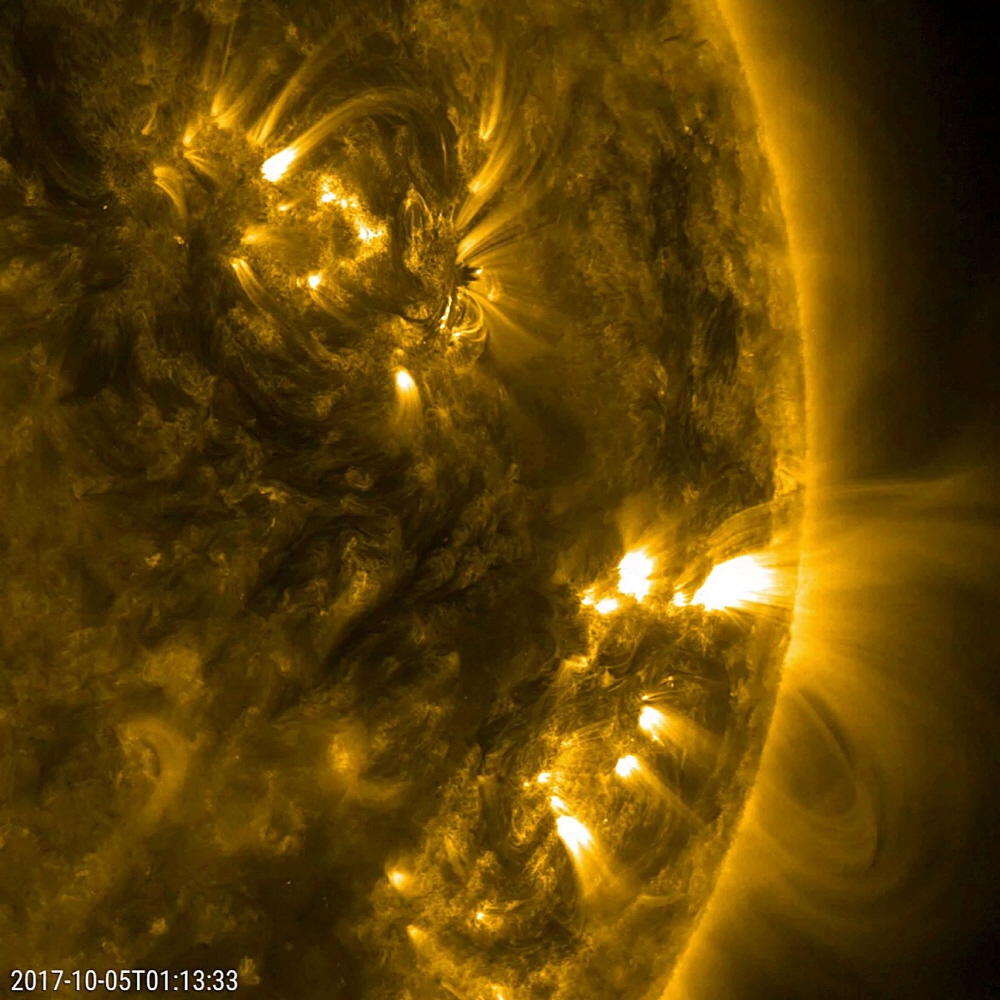
The sun in the sky appears to be unchanged, but in fact, various phenomena of solar activity are occurring in the sun. Among these solar activities, the science YouTube channel Kurzgesagt introduces a phenomenon that can have a major impact on the planet, a solar flare that emits radiation and a corona mass ejection that emits plasma. . Solving the question of how much solar flares and coronal mass ejections affect the Earth and if there are countermeasures.
The sun looks solid, but in reality it is like an ocean hot enough to boil. It is so hot that atoms split into electrons and nuclei and float in plasma. This plasma is formed by the solar magnetic field. Solar plasma creates protons and electrons, which move protons and electrons to create a magnetic field. And this magnetic field creates molecular flow. This molecular flow creates a circulating current inside the sun called a solar dynamo.
The solar magnetic field maintained by this solar generator has tremendous energy and affects the entire solar system. Due to this magnetic field, the plasma of the sun is constantly pouring down on the earth like rain of light. This phenomenon is the solar wind.
However, the solar wind is not always constant. When the solar plasma is in an excited state, it disrupts the magnetic field emitted by the sun. As the chaos develops, magnetic knots can form on the surface of the sun, and the magnetic knots can break apart, launching magnetic loops of enormous energy. This magnetic loop is a stagnant solar activity that has a detrimental effect on the solar system.
One of the phenomena produced by magnetic loops is solar flares that cause high-energy radiation tidal waves. Solar flares rushing at the speed of light are caused by solar winds pushing protons and accelerating them, creating a phenomenon known as a solar proton storm.
The resulting phenomenon is coronal mass ejection. Coronal mass ejection is the tearing and ejection of billions of tons of plasma in the sun’s atmosphere. Plasma ejected by coronal mass ejection reaches a speed of 9 million km/h.
Of course, even if this plasma hits directly, it has no effect on human beings on Earth. But even a small plasma can affect satellites, radio communications, and astronauts in space. Humans on Earth are not affected because of the Earth’s atmosphere and magnetic field. Earth’s atmosphere absorbs X-rays, mitigating the effects of solar flares.
Earth’s magnetic field blocks plasma from coronal mass ejection. Plasma, screwed up like a screw by the magnetic field, is poured along the Earth’s magnetic field lines, mainly at the Earth’s north and south poles. Fantastic aurora is a phenomenon caused by electrons flying into the atmosphere among plasmas pouring into the north and south poles.
Most solar storms have little effect on human beings on Earth. But a super solar storm is a different story. Large-scale solar storms were identified in 1859, 1872, 1909, 1921, 1989, and 2012. A phenomenon that occurs several times per century.
Massive solar storms first emit strong solar flares, such as lightning strikes. The solar flare then creates a plasma with billions of tons of magnetism that causes a coronal mass ejection. This plasma travels the distance between the Sun and the Earth, 149.6 million km, in one day.
When plasma from a large-scale solar storm hits the Earth directly, the impact compresses the Earth’s magnetic field and adds that energy to the Earth’s magnetosphere. In the worst case, the time when the plasma appeared will coalesce according to the Earth’s magnetic field, and the Earth’s magnetic field will be shaped like a tail. Energy is gradually accumulated in this tail, and this energy is ultimately radiated to Earth. This phenomenon is a magnetic storm.
Magnetic storm magnetic fields disrupt currents and affect the power grid, causing massive blackouts and, in the worst case, accidents at substations. In the Canadian province of Quebec, a massive power outage occurred during a massive solar storm in 1989. The 1859 Carrington Event, the largest solar storm ever observed, produced aurora visible even off Hawaii and the Caribbean coast. The Rocky Mountains were shrouded in brightness that could be mistaken for dawn, and people thought that morning had come. In addition, it affects the telegram system deployed in Europe and North America, stops it, and causes an operator electric shock as it is a device. In modern times, where there are more machines than at the time, the damage from large-scale solar storms is expected to be more severe.
A large-scale solar storm similar to the 2012 Carrington event has also occurred. A direct hit from this massive solar storm would have caused $2.6 trillion in damage in the United States alone. The damage is 20 times that of Hurricane Katrina, the largest hurricane in U.S. history. In addition, it is estimated that it would take 4 to 10 years to recover the damage to the global power grid.
The probability of a direct hit of this level of a large-scale solar storm is 12% between 2020 and 2030. However, in 2062, this probability is 50%. It is almost certain that there will be large-scale solar storms in the not-too-distant future.
There is even worse news. According to a study published in 2019, celestial bodies like the sun cause an explosion called a superflare every few thousand years. According to this, the magnetic field created by this superflare is so powerful that it cannot be seen in other phenomena and can have a significant effect on the Earth. If a superflare occurs, electricity, computers, smartphones, GPS, etc. on the planet will not be available, and basic infrastructure such as water supply and medical equipment may also be stopped.
However, measures are already being taken to counteract the effects of this type of solar activity. Observe the sun to monitor the occurrence of solar storms. Electricity companies also take into account the risk of solar storms, and in emergency situations, temporarily reduce the amount of electricity and protect substations. Risks from solar activity are always present but may be controllable.


















Add comment